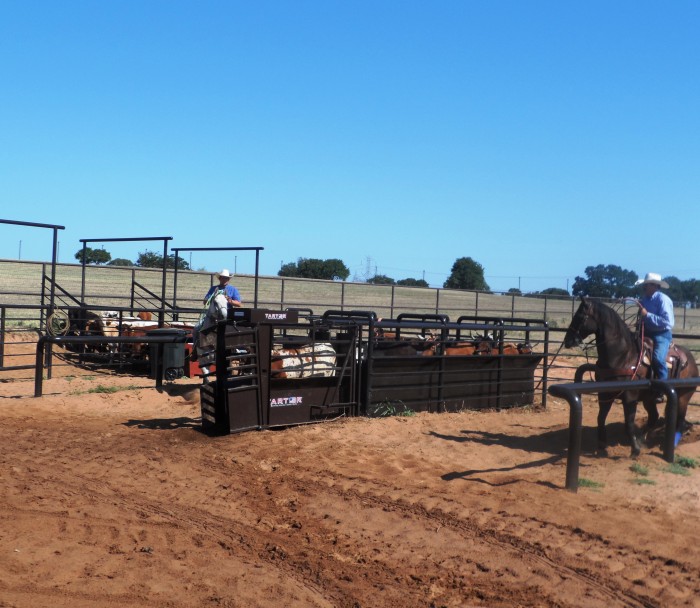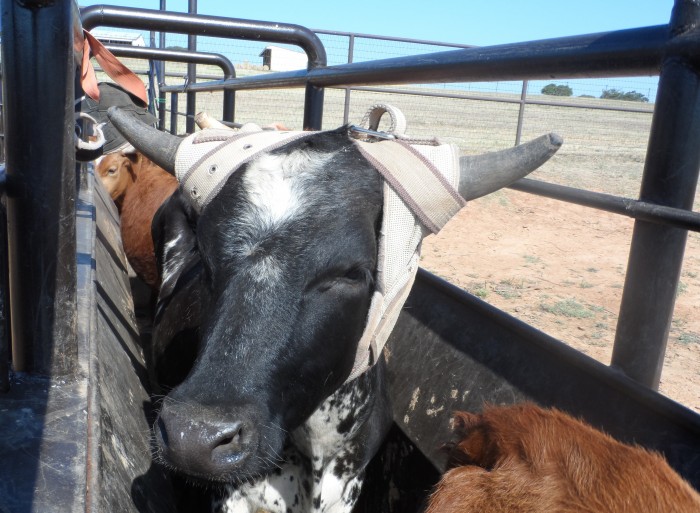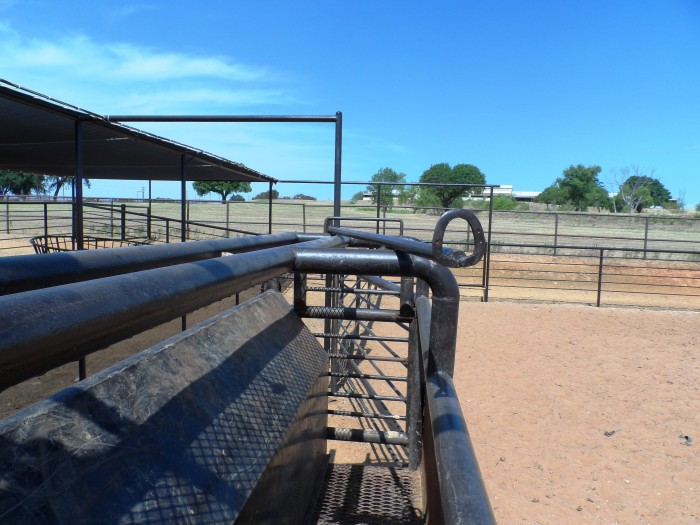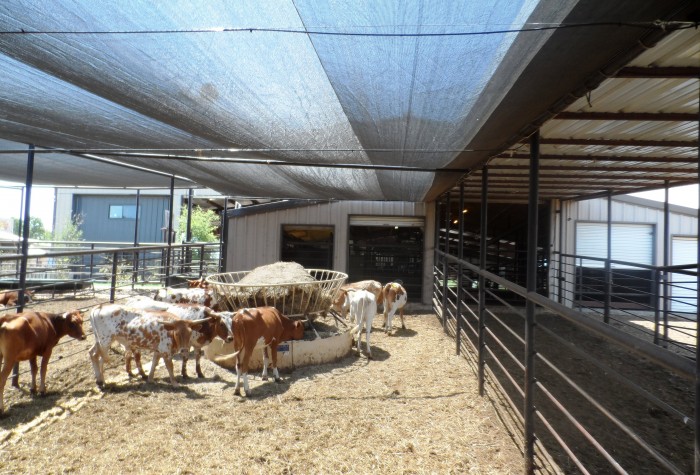Surprise… There are More than 2 Athletes in Team Roping; Part 2
1Remembering that your roping cattle are the 5th athlete in a Team Roping run was deemed a critical factor to consider when analyzing your team roping in our last article, Surprise…There are More than 2 Athletes in Team Roping, Part I. To provide you with a quick re-cap, part 1 explained that in order for the team roper to get the most out of his or her practice cattle, he or she must make sure that their cattle received proper nutrition, care and training. Part 1 gave the details of proper nutrition. However, here in part 2 we want to address care and training cattle also need to remain the best athlete they can be.
 Picture yourself backing in the box, you call for your steer, your horse scores great, your steer breaks hard and much to your amazement, there is a flank strap cinched around the roping steer’s flank as he leaves the chute in a gait that is a cross between a sheep in the mutton busting and a cull from the bucking string of the PBR. As ridiculous as this sounds, it could very well have been the scene in the roping arena of one desperate team roper that was told to put a flank strap on his practice cattle that had begun to drag. He was told that his dragging cattle would “hop on off” because of the flank strap! You say this is ridiculous? Yes, it is indeed. However, it is a true story and the fact is that numerous gimmicks, tricks, and various devices have been created to “cure” problematic practice cattle. While several methods and devices have proven to be helpful in freshening up soured roping cattle, it proves to be far more advantageous to remember that your practice cattle are athletes much like your rope horse and the training and care they receive will prove to essential to their longevity as a useful steer in your practice pen.
Picture yourself backing in the box, you call for your steer, your horse scores great, your steer breaks hard and much to your amazement, there is a flank strap cinched around the roping steer’s flank as he leaves the chute in a gait that is a cross between a sheep in the mutton busting and a cull from the bucking string of the PBR. As ridiculous as this sounds, it could very well have been the scene in the roping arena of one desperate team roper that was told to put a flank strap on his practice cattle that had begun to drag. He was told that his dragging cattle would “hop on off” because of the flank strap! You say this is ridiculous? Yes, it is indeed. However, it is a true story and the fact is that numerous gimmicks, tricks, and various devices have been created to “cure” problematic practice cattle. While several methods and devices have proven to be helpful in freshening up soured roping cattle, it proves to be far more advantageous to remember that your practice cattle are athletes much like your rope horse and the training and care they receive will prove to essential to their longevity as a useful steer in your practice pen.
Every team roper has his or her idea of what proper care for a roping steer should be. It is essential that roping cattle get food and water. We went into some specifics for feed in our last article. However, proper care does not end with nutrition and nourishment. Let’s start with some other basic essentials in providing your roping cattle with proper care. Firstly, cattle need to be de-wormed. Keeping your cattle free of worms will assure that your cattle retain the nutrients from the feed that you provide them with. As a result, their energy levels will remain higher, and in turn the cattle will run better and work longer. Roping cattle also need shade from the sun and shelter from the rain and elements. This sounds obvious, but so many times roping cattle can be found penned behind a roping arena with no shelter to be found. This may be a convenient and inexpensive way to house your cattle, but it is certainly not conducive to keeping your cattle working well month after month.
 Another fundamental care practice is to always use horn wraps on your practice cattle. Cattle that are roped without the use of horn wraps quickly develop sore heads. Sore heads in turn create cattle that throw head tricks and become draggers. Putting on horn wraps also entails the removal of the wraps after every practice session. Yes, this does require extra effort and time, but it is an important factor in keeping your cattle longer. Just as roping cattle without horn wraps creates a sore head on roping cattle, so does leaving the wraps on your cattle day after day. Horn wraps that are left on cattle, create moisture at the base of their horns and create rub marks and sores on their heads and ears. These items are sure to ruin a good steer very quickly as a sore head is one of several reasons that cattle begin to drag and concoct head tricks.
Another fundamental care practice is to always use horn wraps on your practice cattle. Cattle that are roped without the use of horn wraps quickly develop sore heads. Sore heads in turn create cattle that throw head tricks and become draggers. Putting on horn wraps also entails the removal of the wraps after every practice session. Yes, this does require extra effort and time, but it is an important factor in keeping your cattle longer. Just as roping cattle without horn wraps creates a sore head on roping cattle, so does leaving the wraps on your cattle day after day. Horn wraps that are left on cattle, create moisture at the base of their horns and create rub marks and sores on their heads and ears. These items are sure to ruin a good steer very quickly as a sore head is one of several reasons that cattle begin to drag and concoct head tricks.
With healthy, well cared for and well fed cattle run up into the roping lane, we have created a great start to keeping roping cattle working well and lasting longer. However, it does not end here. As with the rope horse, it is imperative to implement good cattle training practices into our practice roping sessions. Many of these practices are simple and easy to implement and may not seem like training at all. However, it is creating an environment that keeps your cattle working well and lasting longer. For instance, have some rules for dallying. Some ropers do not allow dallying on their practice cattle.
However, it is no secret that the roper must work on dallying skills, just as his or her catching skills. So, allow your heelers to dally on your cattle. However, have rules such as not dallying on a one leg catch, or having your header un-dally before the heeler comes tight to allow the steer to come tight on his own weight.
 Another idea to keep in mind is allowing the catch pen or stripping chute to be a place for reward or reprieve for your practice cattle just as you try to keep the roping box a “safe” place for your rope horse. By keeping the stripping chute and catch pen your cattle’s “safe place”, they will be more apt to run straight to it and do it quickly. There are several ways to accomplish this. Firstly, do not allow your friends and ropers to take their ropes off in the arena after they rope. This allows cattle to quit once they are caught which often is the precursor to cattle that drag. Instead, insist that they follow their cattle out of the arena and remove their rope in the stripping chute. This reinforces the idea that the end of the arena is where your cattle run to and want to be. Another method is implementing another policy for roping in your arena. That policy is simple. If the heeler has not caught the steer by the time the header and steer have reached the left fence, he does not throw and the header turns loose of the steer. All too often, headers are seen dragging their steer across the pen and then back up towards the roping box. This is a recipe for creating a dragging steer. By turning the steer yet again to head towards the roping box, your cattle will learn to drag as they are being pulled the very opposite direction from where they want to go.
Another idea to keep in mind is allowing the catch pen or stripping chute to be a place for reward or reprieve for your practice cattle just as you try to keep the roping box a “safe” place for your rope horse. By keeping the stripping chute and catch pen your cattle’s “safe place”, they will be more apt to run straight to it and do it quickly. There are several ways to accomplish this. Firstly, do not allow your friends and ropers to take their ropes off in the arena after they rope. This allows cattle to quit once they are caught which often is the precursor to cattle that drag. Instead, insist that they follow their cattle out of the arena and remove their rope in the stripping chute. This reinforces the idea that the end of the arena is where your cattle run to and want to be. Another method is implementing another policy for roping in your arena. That policy is simple. If the heeler has not caught the steer by the time the header and steer have reached the left fence, he does not throw and the header turns loose of the steer. All too often, headers are seen dragging their steer across the pen and then back up towards the roping box. This is a recipe for creating a dragging steer. By turning the steer yet again to head towards the roping box, your cattle will learn to drag as they are being pulled the very opposite direction from where they want to go.
Finally, score your cattle out a ways. This accomplishes a multitude of things for the roper, the rope horse and the roping cattle. By allowing your practice cattle a head start, you the roper are creating good scoring practices for yourself, your rope horse(s) and in turn allowing your cattle a head start that gives them incentive to run as they have a way to escape. All too often, headers in a practice pen environment are seen breaking from the box right as their steer leaves the chute. Sure this can make a header feel like he has turned a steer to be 4 flat, however, he is not practicing skills that will allow him to win in a competition setting with a barrier and he is furthermore creating the perfect environment for the practice cattle to set up and stop before being roped.
 It has become common knowledge that the supply of roping cattle has become more and more scarce. As an immediate consequence, roping cattle have become more difficult to find and more expensive to buy. Hand in hand with this fact comes the need to keep roping cattle working longer and lasting longer. By implementing these simple rules and practices in your roping arena, you will increase the longevity of your roping cattle and not leave you grasping for ideas and gimmicks to get your cattle out of problematic habits.
It has become common knowledge that the supply of roping cattle has become more and more scarce. As an immediate consequence, roping cattle have become more difficult to find and more expensive to buy. Hand in hand with this fact comes the need to keep roping cattle working longer and lasting longer. By implementing these simple rules and practices in your roping arena, you will increase the longevity of your roping cattle and not leave you grasping for ideas and gimmicks to get your cattle out of problematic habits.
Article written by Erin Siegal Reich of FSR Cattle Company LLC



I would like to see more pictures of this stripping chute. I’m curious as to how it is built and works. Could you send me additional pictures?